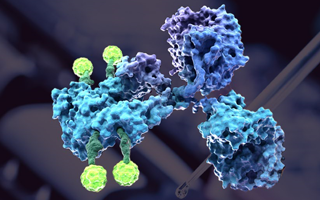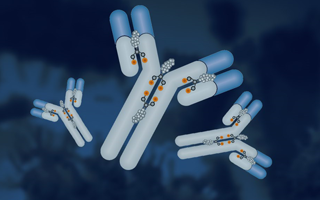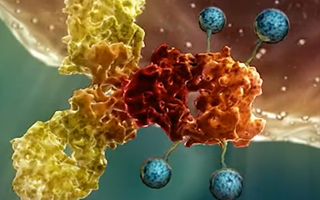Fatty Acylation Intrabody Development Service
With the great aid of our bioinformatic machine, scientists of Creative Biolabs are able to acquire the most suitable SP sequences to endow proteins with the best anchor on the intracellular plasma membrane through our specific fatty acylation intrabody development platform. In addition, multiple customized modifications can be involved as well, such as an efficient cleavage site and optimized robust expression.
Intrabody Development through Fatty Acylation
Fatty acylation is an essential post-translational modification, which covalent attachment of fatty acids at certain amino acid residues. The most common fatty acids are the saturated myristic (14-carbon) acid and palmitic acid (16-carbon) contained either one or both on a target protein. Thus, the fatty acylation can be categorized into the two following classes:
N-myristoylation is generally an irreversible modification, which typically occurs during protein synthesis. In detail, the myristic acid is attached to the α-amino group of an N-terminal glycine residue through an amide linkage by N-myristoyltransferase. In the protein sequence, a Met-Gly sequence is usually located with either a serine or threonine at position 5. Physiologically, the N-myristoylation is involving in signal transduction cascade, protein-protein interactions and molecular mechanisms for regulating protein targeting and normal function. For example, the BH3 interacting domain death agonist (Bid) targets to the mitochondrial membrane to release cytochrome c in apoptosis and programmed cell death. Other proteins with N-myristoylation are actin, gelsolin, etc.
S-palmitoylation is a reversible protein modification mainly on the cytoplasmic side of the plasma membrane, which can be removed by palmitoyl thioesterase. During the modification, a palmitic acid is attached to a specific cysteine residue via a thioester linkage. In the normal biological pathways, S-palmitoylation regulates the interaction, signaling process, subcellular localization, stability, and trafficking. For example, the postsynaptic density protein 95 (PSD-95) with S-palmitoylation is restricted to the membrane and allows clustering of multiple ion channels in the postsynaptic membrane for regulating neurotransmitter.
At Creative Biolabs, our scientific teams and platforms unceasingly design and develop the most creative and effective fatty acylation (mainly the N-myristoylation) on customer’s proteins or intrabodies aiming at anchoring on the intracellular plasma membrane.
 Fig.1 Intracellular plasma membrane-anchored intrabodies via N-myristoylation modification.
Fig.1 Intracellular plasma membrane-anchored intrabodies via N-myristoylation modification.
Other Anchoring Modification Options provided by Creative Biolabs
Including the intracellular plasma membrane, Creative Biolabs can also develop specific positioning antibody for a variety of destination, which including but not limited to:
| Extracellular Space | Extracellular Plasma Membrane | Intracellular Plasma Membrane | Cytoplasm |
| Nucleus | Endoplasmic Reticulum | Golgi Apparatus | Mitochondria |
| Chloroplast | Lysosome | Peroxisome | Vacuoles |
If you are interested in developing novel fatty acylation intrabodies, please do not hesitate to inquire us for detailed information.
All of our antibody products and services can only be used for preclinical research studies. Do not use them on humans.
Related Services:
- Prenylation Intrabody Development
- Extracellular Space Positioning Antibody Development
- Extracellular Plasma Membrane Positioning Antibody Development
- Intracellular Plasma Membrane-Anchored Intrabody Development
- Cytoplasm Positioning Intrabody Development
- Nucleus Positioning Intrabody Development
- Endoplasmic Reticulum Positioning Intrabody Development
- Golgi Apparatus Positioning Intrabody Development
- Mitochondria Positioning Intrabody Development
- Chloroplast Positioning Intrabody Development
- Lysosome Positioning Intrabody Development
- Peroxisome Positioning Intrabody Development
- Vacuole Positioning Intrabody Development

Welcome! For price inquiries, please feel free to contact us through the form on the left side. We will get back to you as soon as possible.
Contact us
USA
Tel:
Fax:
Email:
UK
Tel:
Email:
Germany
Tel:
Email:







